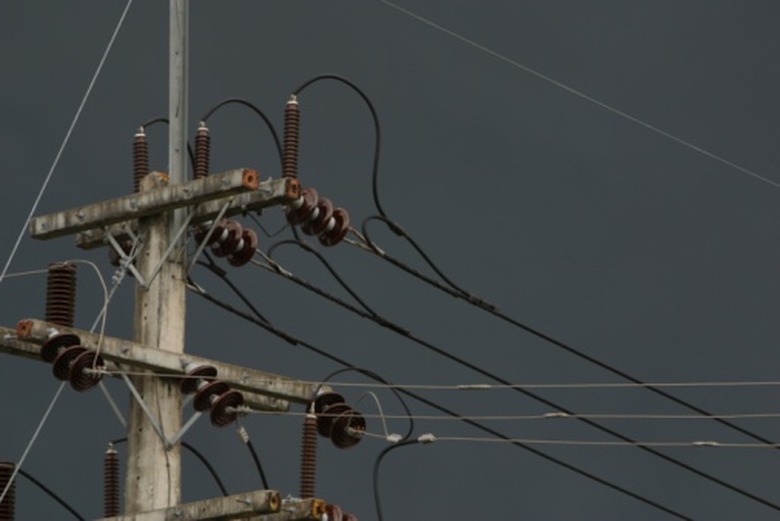How To Convert 240 Single Phase To 480 3 Phase
When electricity is generated at a power plant, it typically must travel considerable distances before reaching its destination. Along the way, its voltage is greatly increased, or "stepped up," as it travels along high-tension lines suspended far above the ground for both safety and engineering reasons.
Before the electricity can be delivered to homes or other points where it is used, its voltage must be reduced to suit the operational levels of household appliances or industrial machinery. In addition, you may need to work with particular voltage levels that are uncommon in the home but frequent in certain kinds of machinery.
One example is the need to go from single-phase 240-volt (V) to 480-V three-phase arrangement when a machine rated at 480 volts is present. The device used to do this is called a transformer. But what are "phases" in the context of electricity and why are they present in electrical systems?
Voltage, Current and Electrical Power
Voltage, Current and Electrical Power
Fundamentally, electrical current is the flow of moving charges in the flow of electrons. Charges move under the influence of an electric field. Just as objects with mass tend to be accelerated by gravitational fields, charged particles tend to be accelerated by electrical fields. The strength of these fields is measured in voltage, which is a word describing electrical potential difference. Where there is no net voltage, charges will not move.
In physics, current flow I (measured in amperes, A) is the potential difference divided by the resistance R (measured in ohms, Ω) of the medium in which charged flow, usually a conducting wire: I = V/R. Also, electrical power P is the product of voltage and current (P = VI), and can also be expressed in terms of resistance (P = I2R).
The typical voltage entering a home in the United States is 120 V. If you look at the labeling of most things that are meant to be plugged into an outlet, this is the number you are likely to see.
What Are Voltage Phases?
What Are Voltage Phases?
When alternating currents (AC) have the same frequency, but their starting points are offset by a specific fraction of that frequency, such as 120 degrees, they can be added together in power systems to create three-phase power, which is advantageous for a number of reasons over the single-phase power that would result if only a single wave were used.
What Is a Transformer?
What Is a Transformer?
A transformer is a device that changes the voltage in a circuit. Transformers are placed in electrical power grids at key points and insulated from the outside environment. They consist of a hollowed-out, magnetic iron core around which a wire is wrapped on each side. The side the current enters on is the primary (P) side or coil, and the exit side is the secondary (S) side or coil.
Let N equal the number of turns around the transformer of each wire. The relationship between the voltage and the number of turns on each side is described by the equation:
\(V_{S}/V_{P} = N_{S}/N_{P}\)
This means that increasing the "outgoing" voltage is accomplished by increasing the number of turns, resulting in a step-up transformer. Similarly, a step-down transformer is built with a lower number of turns on the secondary side than on the primary side.
- Note that since no power is added at a transformer, and P = VI, an increase in voltage necessitates a decrease in current and conversely.
The 240 to 480 Step-up Transformer
The 240 to 480 Step-up Transformer
To get from 240-volt 1-phase power to 480-volt 3-phase power, you need a step-up transformer that is manufactured to the proper specifications to handle this task. These are available online or at electrical supply stores. Make sure you have a qualified professional to help with installation if you are not familiar with the operation of such equipment.
Cite This Article
MLA
Beck, Kevin. "How To Convert 240 Single Phase To 480 3 Phase" sciencing.com, https://www.sciencing.com/convert-phase-480-3-phase-8633819/. 21 December 2019.
APA
Beck, Kevin. (2019, December 21). How To Convert 240 Single Phase To 480 3 Phase. sciencing.com. Retrieved from https://www.sciencing.com/convert-phase-480-3-phase-8633819/
Chicago
Beck, Kevin. How To Convert 240 Single Phase To 480 3 Phase last modified March 24, 2022. https://www.sciencing.com/convert-phase-480-3-phase-8633819/
